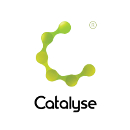We are pleased to let you know the first of 2025’s CPD days is now open for booking. David Harvey is offering an online version of his very popular day on CAT as a Tool for Leadership on 31st January 2025. The first planned run of this day had to be postponed during lockdown in 2020. David readily took the plunge into remote delivery, and it ended up being the first of our online events. David has since led the day another three times face-to-face as part of our CPD programme. He’s also delivered it for a couple of NHS Trusts who commissioned bespoke CPD days through Catalyse. Each time it gets consistent feedback as highly relevant to the realities of NHS and other public service settings. In the words of one participant:
“One of the few teachings that recognises the reality of our day to day work, and proposes realistic strategies to support a traumatized system.”
If you are familiar with David’s work you’ll know that he makes use of CAT’s Multiple Self States Model (MSSM) as applied to systems. In addition to a systemic overview he also manages to back-translate this conceptual understanding into manageable, personal and human interventions which help to maintain more healthy communication and relationships amongst staff, teams and levels within systems where risk and complexity present frequent challenges.
We were reckoning up that over a hundred participants have benefitted from this training to date. Perhaps we can entice David into considering a ‘next step’ follow-on of some sort. This could build on the leadership capabilities of those who have been using these ideas in their settings to date….
The day is open not just to CAT Practitioners, Psychotherapists and trainees. It is also relevant and open to all professionals tasked with leading or influencing other colleagues, teams or systems which support service users with complex needs and/or high risks. By running it online a second time, we hope it is accessible to those who may struggle to attend an in-person event. With increasingly unpredictable weather, especially in the winter months, this may circumvent problems with travel and keep CAT CPD on our agendas as the new year begins.
You can read more about the day and book on to January’s event through the link at https://catalyse.uk.com/cpd/cat-as-a-tool-for-leadership-31-january-2025/
Update 17 October 2024 – this event is now fully booked but do contact us if you’d like to add your name to a waiting list for cancellations or notification about a future repeat.





